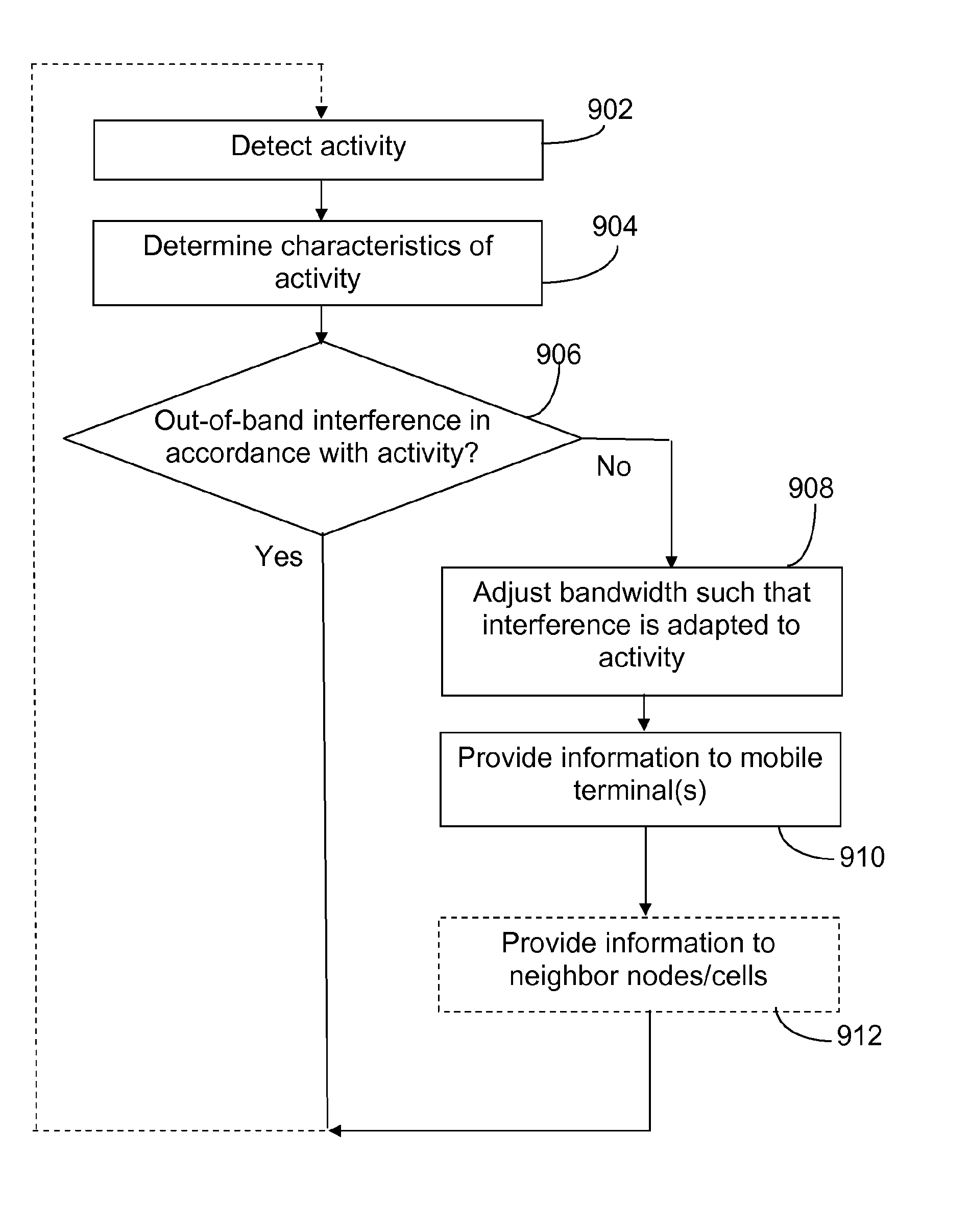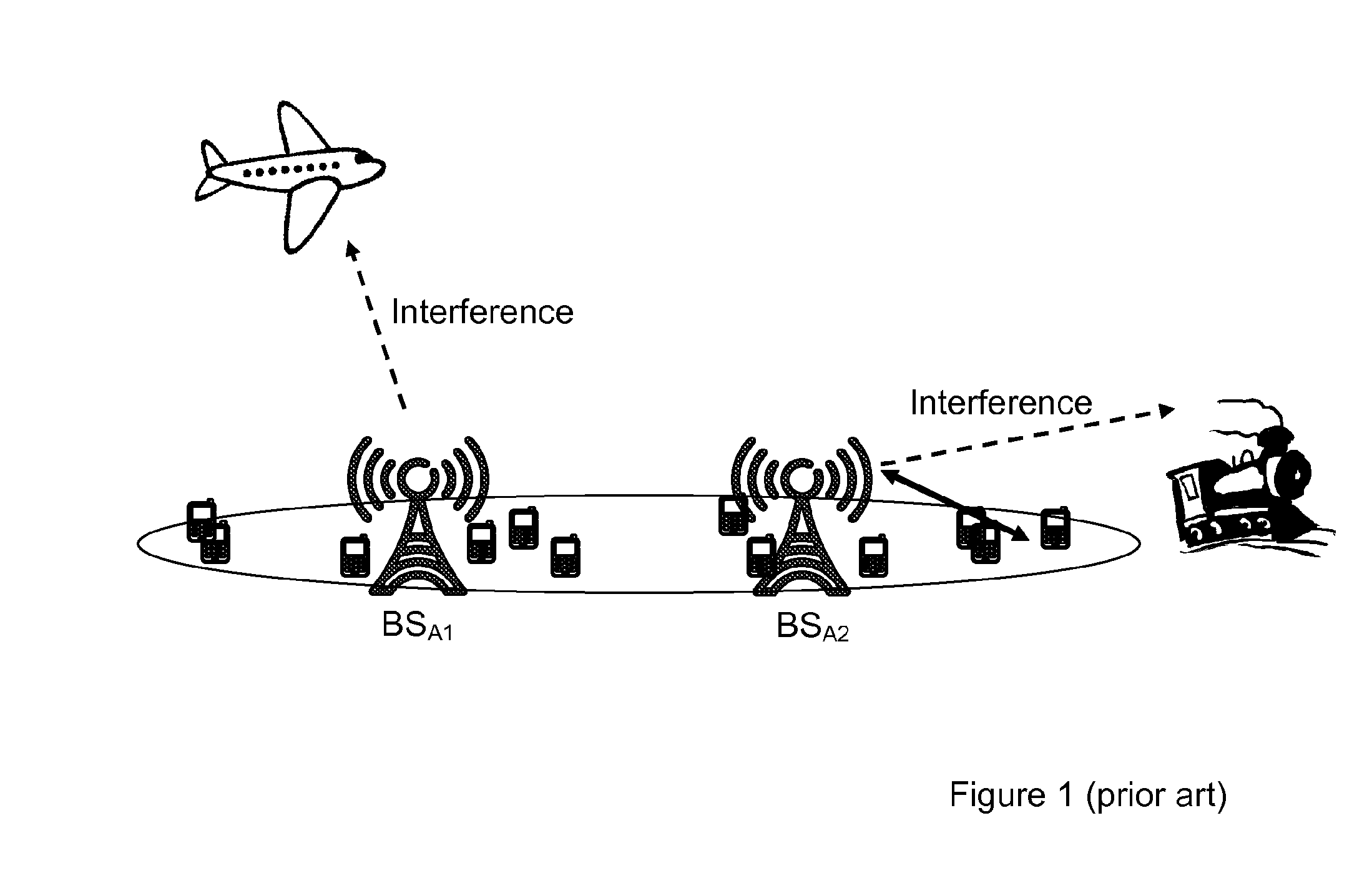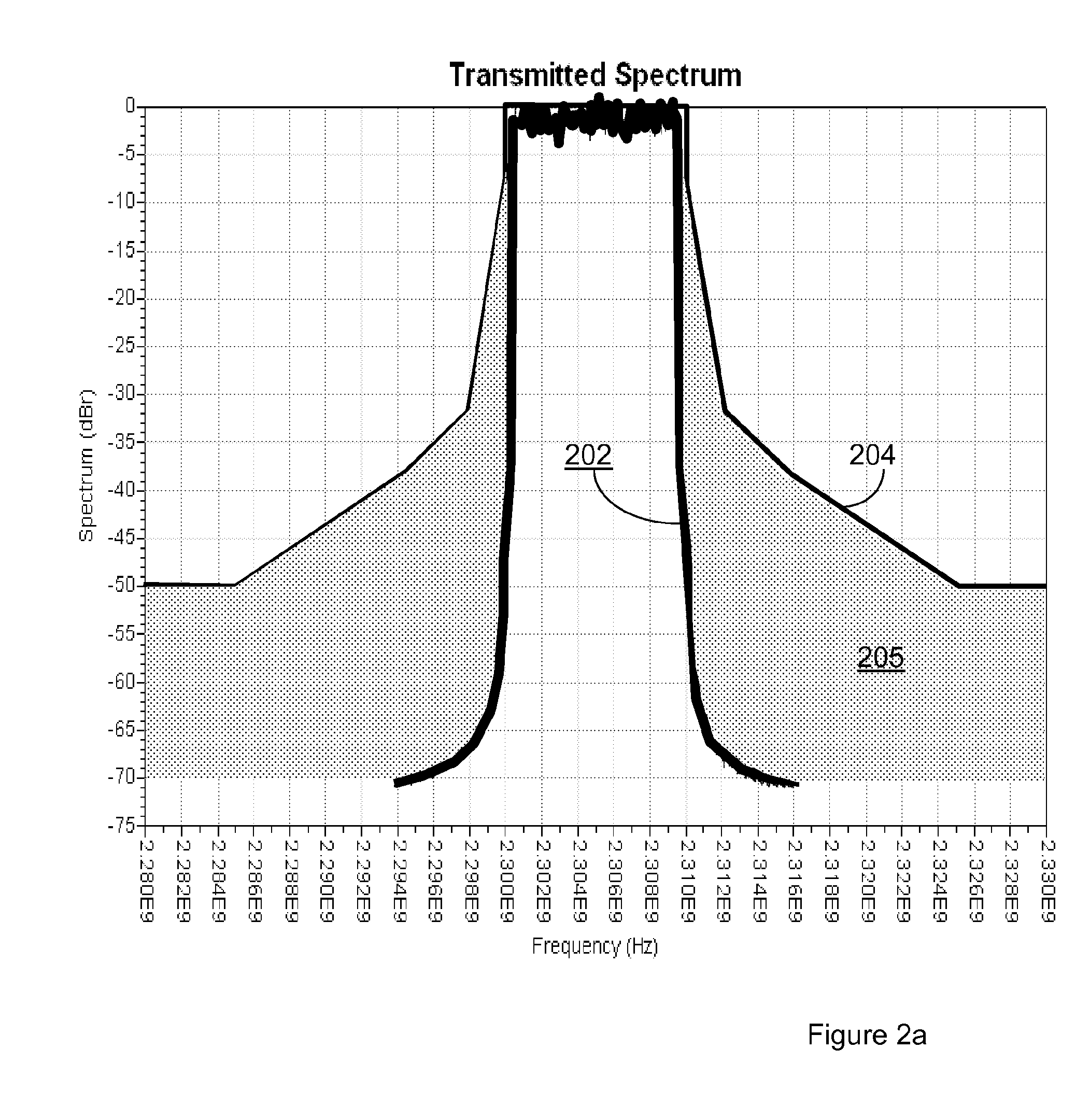Method and Arrangement Related to Interference Between Systems
a technology of interference and system, applied in the field of method and arrangement related to interference between systems, can solve the problems of dme or l-dacs system interference, out-of-band interference from lte dl transmission, and more difficult to develop filters which can cut out-of-band emissions for a relatively large bandwidth than for a relatively narrow bandwidth, so as to avoid or reduce interference, improve interference handling, and improve interference handling
- Summary
- Abstract
- Description
- Claims
- Application Information
AI Technical Summary
Benefits of technology
Problems solved by technology
Method used
Image
Examples
second embodiment
[0058]LTE BSs implementing e.g. the first and / or second embodiment described above, can apply load balancing techniques so as to steer a part of the cell load to neighbor cells, whose controlling BSs do not interfere with the airplanes or trains, during the time period the temporary guard band is applied.
[0059]Implementing temporary modification of the system bandwidth may require that some practical problems resulting from a temporary system bandwidth reduction need to be resolved. One such problem is the channel estimation. Some adjustments or additions to e.g. standard specifications may be required. For example, if a system operating within a 20 MHz frequency channel is adjusted to temporarily operate within an 18 MHz frequency channel, the number of available Physical Resource Blocks (PRBs) is reduced. Thus, it should be seen to e.g. that the DL PDCCH can be properly carried within the remaining amount of PRBs. Organizations such as the 3GPP (3rd Generation Partnership Project)...
third embodiment
[0063]In the invention, users scheduled according to semi-persistent scheduling (SPS) policy in DL, are temporarily not allocated or granted resources within this temporary guard band.
[0064]In LTE, the bandwidth over which a UE within a cell should perform measurements is specified to said UE e.g. by an eNB serving the UE. This specification is made by use of a parameter denoted “AllowedMeasBandwidth”, which is broadcasted in the System Information Block 3 (SIB3), as it can be seen e.g. within 3GPP TS 36.331. However, the parameter “AllowedMeasBandwidth” can only assume the values 6, 12, 25, 50, and 100 RBs. Thus, only these alterative numbers of RBs can be used for measurements. In addition, these RBs are centered around the central RB.
[0065]An option would be to use the existing signaling, without any modification. For example, consider a cell near an airport having a bandwidth of 20 MHz (100 RBs). Upon detection of an airplane approaching, it is decided to use 17.5 MHz of the ava...
PUM
 Login to View More
Login to View More Abstract
Description
Claims
Application Information
 Login to View More
Login to View More - R&D
- Intellectual Property
- Life Sciences
- Materials
- Tech Scout
- Unparalleled Data Quality
- Higher Quality Content
- 60% Fewer Hallucinations
Browse by: Latest US Patents, China's latest patents, Technical Efficacy Thesaurus, Application Domain, Technology Topic, Popular Technical Reports.
© 2025 PatSnap. All rights reserved.Legal|Privacy policy|Modern Slavery Act Transparency Statement|Sitemap|About US| Contact US: help@patsnap.com



